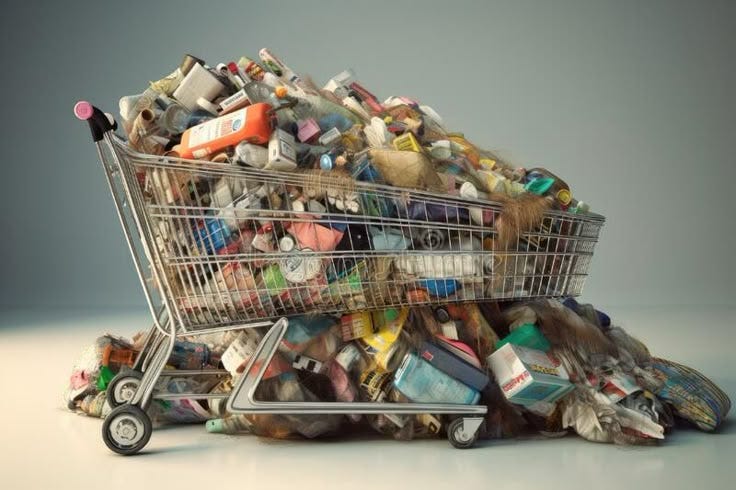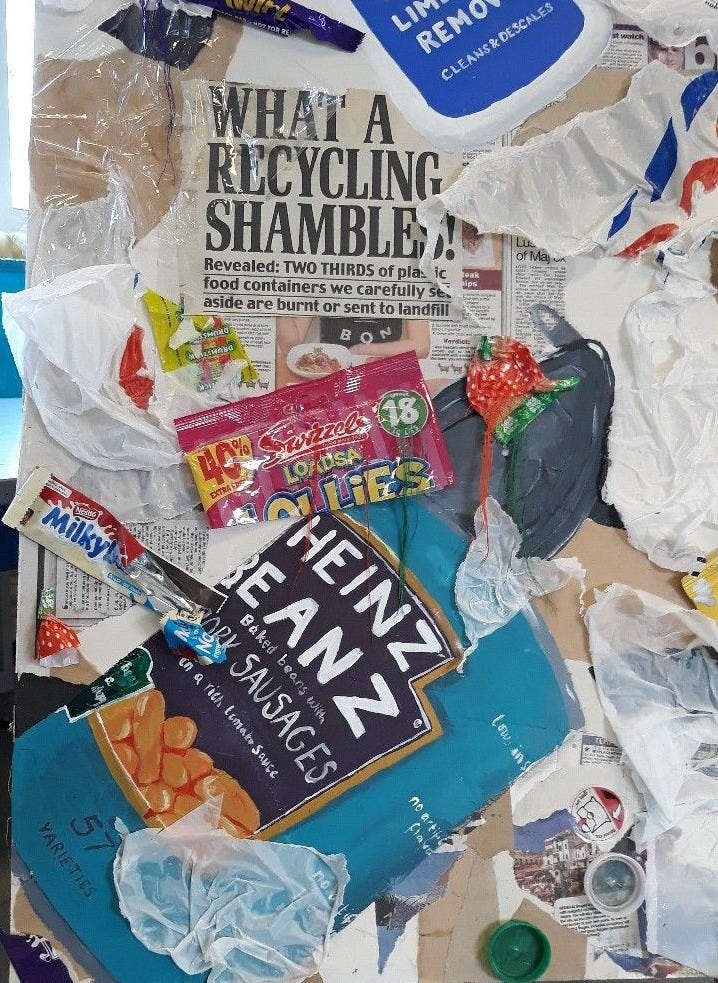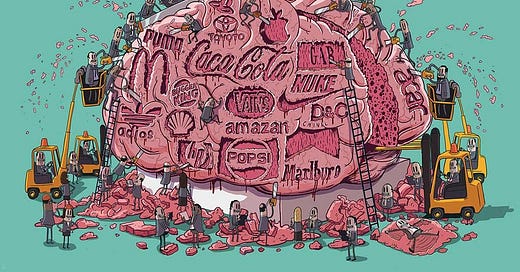Overconsumption Core: A Dangerous Aesthetic
The heart of consumerism in the world of digital media and advertising
The vicious cycle of capitalism, consumerism and marketing has led to a growing epidemic of overconsumption. Essentially, it means buying more than we can consume or more than we require. One of the major causes seems to be the ease of buying and selling with the ever-growing social and digital media. Digital media has become the playground for numerous types of evil to thrive. I go as far as calling capitalism evil because it’s 2025, so you already know it’s true. Incessant and clever marketing is forcing people to buy more and this is increasingly becoming more about buying than consuming.
Finger snapping delivery
The latest fad of “5-minute online delivery” in India is a prime example of this fact. The things we bought from our dear kirana stores while mingling in our neighbourhoods are now the things we make delivery people run for while they remain overworked and underpaid under toxic work conditions. BlinkIt by Zomato (now known as Eternal. Ltd) started with the fastest delivery of everyday items and with its success, it became a competition in the delivery market with bbdaily by Big Basket, Zepto and the late Dunzo following suit - reducing the 30-minute delivery time to 20, which now goes as low as an obscene 8 minutes. Have we forgotten that these are people like us who have to run around to get us non-essential things that we can get ourselves if we plan better?
The most common way of ordering off of BlinkIt, which has risen as the most commonly used fast delivery app, is wanting to buy one thing and adding a whole bunch of unnecessary items to feel better about the order. You’ve seen this around you and might even be guilty of doing this because most of us are. But what it says about us is that we understand the level of dependency we have on these apps and how our shopping practices have changed lately but there is little we do to change it so we conveniently modify it on our high horses.

With the ease of ordering and delivering, the urge to buy more stuff has also increased drastically. Now that you can get new earphones delivered to your doorstep in 10 minutes, why should you use your old ones? Zomato’s oft-offensive marketing and a recent casteist veg-only fleet controversy, these companies have created and ruined the gig economy. There was a time when we were amazed by Zomato’s marketing strategies and their grip on following trends by the hour, but over time, it has become quite incessant and given their treatment of the gig workers, seen as counterproductive. If they can’t treat their employees well, isn’t the finger-snapping delivery exploitative? Let’s get out of our comfortable and privileged bubble to think about it the next time we order from one of these platforms.
Restocking online
The boom of short, oddly satisfying and aesthetically pleasing videos online has given way to a new kind of overconsumption. I found them on Instagram while doom-scrolling (as one does) and ended up following one of the accounts that makes these videos. Essentially, they’re extremely unrealistic restocking of household items from the kitchen and laundry. They’re stylized and coordinated to holidays, seasons, birthdays and for any other reason under the sun.
A video titled “Restocking my teenager’s washroom” was truly baffling with pink toilet paper rolls, pink bath mats, pink soaps, shampoos, tubes of toothpaste, toothbrushes, and every other personal care item you can think of in the colour pink and yes, they’re all plural. It reminded me of the time when I was that age sharing a washroom with three other people and I tried finding a stray soap dish to no avail. These videos are not only unrealistic but set an unhealthy precedence for the viewers, encouraging and adding to plastic usage. They often come with a brand deal with Amazon or a personal care brand but at the heart of it, they serve no purpose. With the exponentially increasing amount of video content available online, these videos are just part of the noise, providing no value.
The Ever-growing Advertising
The digital space has paved the way for much more advertising than we were ever before susceptible to. It costs less than physical ads and requires no physical space. All enterprises - big and small, are now making use of digital marketing given its efficiency and boosted by our constant need to check social media. Marketing uses a lot of research and psychology, keeping up with what the audiences tend to avoid and tailoring their consumer-focused strategies accordingly.
A study by Media Dynamics, Inc. revealed that in the 1970s, the average person saw around 500 to 1,600 ads per day. However, with the advent of digital media, this number has increased exponentially. Research on the exact number of ads the average person sees each day varies, but estimates suggest that we are exposed to anywhere from 4,000 to 10,000 ads daily. This figure includes all forms of advertising, from traditional media like TV and radio to digital platforms such as social media, search engines, and websites.
From a supply standpoint, technological advances have increased production capacity, making it cheaper than ever to pump out as much product as possible. From a demand standpoint, new technology has resulted in people seeing exponentially more advertisements than they used to, and enabled advertisers to more effectively reach their target audiences, an article on Sentient explained.
Environmental Impact
Discussions around overconsumption would be incomplete without the mention of overpopulation and the inevitable impact on the environment. “Larger populations require more food, water, and energy, and consequently tax the earth’s ability to replace used resources. Overpopulation depletes wildlife to dangerously low levels,” an article on the Population Media Center reported. “Every human deserves clean water, clear air, and space to live—a fair amount of Earth’s resources. These are basic human rights. There are no “right” or “wrong” people to inhabit our planet, but we must all work together to change our current population trajectory, which has us on track to hit nearly 11 billion people by 2100, a capacity our world simply cannot handle while providing adequately for all inhabitants,” the article added.

Gross consumption of resources as well as the unchecked buying and selling of goods has been stressing our planet for decades and it has only increased in recent years. According to a report by the Committee on the United States Contributions to Global Ocean Plastic Waste, “The United States contributes more to this deluge than any other nation, generating about 287 pounds of plastics per person. Overall, the United States produced 42 million metric tons of plastic waste — almost twice as much as China, and more than the entire European Union combined.”
Overconsumption has been rampant with material goods and likes and views being prioritized over the actual usage of necessary items. With advertising, ease of ordering and globalization further adding to the issue, consumerism needs to be contained.







Reading this post reminded me of all the times I was subjected to that nail-tapping ASMR torture on cardboard boxes. I think the new norm is *want is the new need*.
What is also annoying is the strategic pricing of items on these quick commerce apps that compel us to match the free delivery limit by adding items that we don't need but might need later (and then just forget about it altogether). That said, there is no dismissing the fact that consumer mindset holds equal accountability in this context.
All in all, the repercussions of this trend will emerge years later when we finally manage to look beneath the pile of all that packaging waste, thanks to the 10 minute delivery promise.
What's next in the race? Maybe they will hack into our brains and start delivering even before we order.